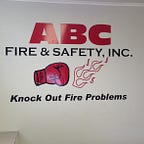Enhancing Home Safety: Kitchen Fire Suppression in Kenilworth
Introduction:
The kitchen is the heart of many homes, where families gather to cook, eat, and share moments together. However, it is also one of the most common areas for household fires, primarily due to cooking activities. Ensuring kitchen fire safety is paramount for homeowners in Kenilworth and beyond. In this blog post, we will explore practical and user-friendly kitchen fire suppression in kenilworth strategies to enhance home safety and minimize fire-related risks.
Understanding Kitchen Fire Hazards:
Before diving into fire suppression strategies, it’s crucial to understand the common causes of kitchen fires:
Cooking Oil and Grease Fires: Overheated oils, grease splatters, and food left unattended on stovetops can lead to dangerous fires.
Electrical Malfunctions: Faulty wiring, overloaded circuits, and old appliances can spark electrical fires, especially in older homes.
Flammable Materials: Kitchen towels, curtains, and clutter near cooking areas can easily catch fire if exposed to heat or flames.
Unattended Cooking: Leaving cooking food unattended, even for a short time, can result in burnt food or ignition of nearby combustibles.
User-Friendly Kitchen Fire Suppression Strategies:
Install and Maintain Smoke Alarms:
Smoke alarms are your first line of defense against kitchen fires by providing early warning signals. Here are some user-friendly tips:
Install smoke alarms in or near the kitchen and on each level of your home, including bedrooms and basements.
Use interconnected smoke alarms so that when one alarm detects smoke, all alarms sound to alert occupants throughout the house.
Test smoke alarms monthly by pressing the test button and replace batteries annually or as needed. Replace smoke alarms every 10 years.
Keep Flammable Items Away from Heat Sources:
Preventative measures can significantly reduce fire risks in the kitchen:
Keep kitchen towels, potholders, paper towels, and curtains away from stovetops, ovens, and other heat-producing appliances.
Store flammable liquids such as cooking oils, cleaners, and alcohol-based products away from heat sources in cool, well-ventilated areas.
Practice Safe Cooking Habits:
Simple changes in cooking habits can go a long way in preventing kitchen fires:
Never leave cooking food unattended on the stove or in the oven. If you must leave, turn off the heat or use a timer to remind you.
Use appropriate-sized pots and pans on burners to prevent spills and flare-ups. Avoid overcrowding the stovetop.
Keep a lid nearby when cooking with oil or grease. If a small grease fire starts, carefully slide the lid over the pan to smother the flames and turn off the heat.
Invest in a Fire Extinguisher and Learn How to Use It:
Having a fire extinguisher and knowing how to use it correctly can make a significant difference during a kitchen fire:
Purchase a multi-purpose fire extinguisher labeled for Class A, B, and C fires. Keep it accessible in the kitchen, away from cooking appliances but within reach.
Familiarize yourself and your family members with the PASS technique for using fire extinguishers:
P: Pull the pin to unlock the extinguisher.
A: Aim the nozzle or hose at the base of the fire.
S: Squeeze the handle to discharge the extinguishing agent.
S: Sweep the nozzle from side to side, covering the base of the flames until the fire is out.
Consider Automatic Fire Suppression Systems:
For added peace of mind and enhanced fire protection, consider installing automatic fire suppression systems designed specifically for kitchens:
These systems can detect fires early and deploy suppression agents automatically, often using specialized agents effective against grease fires.
Consult with fire safety professionals or technicians familiar with local fire safety codes and regulations for proper system selection, installation, and maintenance.
Create and Practice a Fire Escape Plan:
In the event of a kitchen fire or any home fire emergency, having a well-thought-out escape plan can save lives:
Plan multiple escape routes from each room in your home, especially bedrooms and upstairs areas.
Practice fire drills with your family, including young children, to ensure everyone knows how to exit the house safely.
Designate a meeting point outside the home where everyone can gather after escaping. Ensure this location is a safe distance from the house.
Conclusion:
Kitchen fire safety is a shared responsibility that requires proactive measures, awareness, and preparedness. By implementing user-friendly fire suppression strategies such as installing and maintaining smoke alarms, practicing safe cooking habits, having a fire extinguisher and escape plan, and considering advanced fire suppression systems, homeowners in Kenilworth can significantly reduce the risks of kitchen fires and protect their families and properties. Remember, a little preparation and vigilance can go a long way in enhancing home safety and peace of mind.
